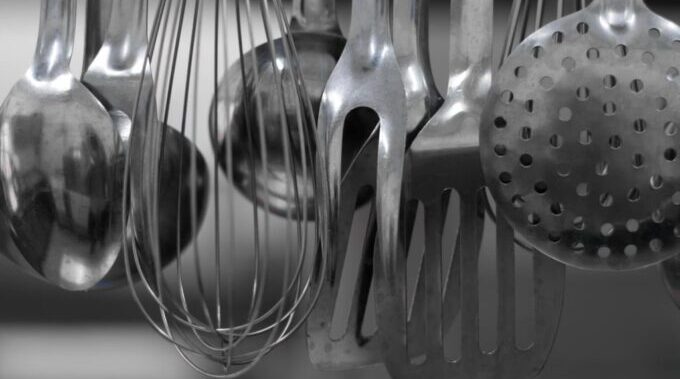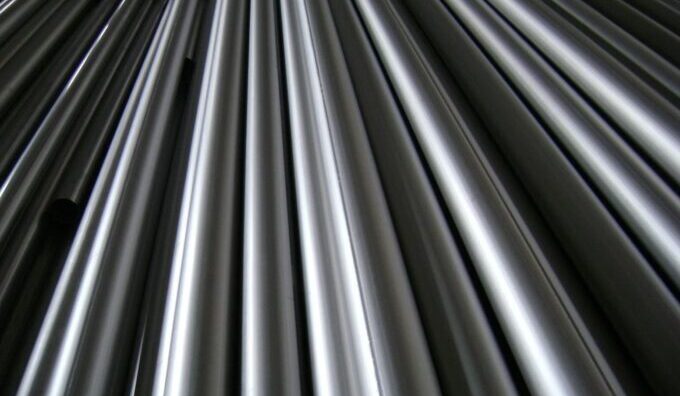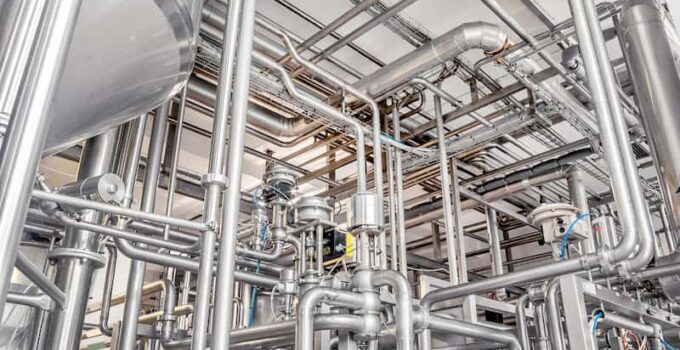Stainless steel, often dubbed the ‘miracle metal’, is an incredible fusion of strength, beauty, and versatility. From the spoons we use to the skyscrapers we admire, this alloy has effortlessly integrated into almost every aspect of our daily life. And while many recognize stainless steel by its reflective shine, there’s so much more under the surface. Prepare for a deep dive into ten lesser-known facts about this remarkable material.
Discovery of Stainless Steel
The tale of stainless steel’s birth is a mosaic of chance, curiosity, and scientific perseverance. In 1913, Harry Brearley, an English metallurgist, was on a mission: he sought to engineer a metal to prevent the rapid erosion of gun barrels. But as with many groundbreaking inventions, what he found was unexpected. In his experiments, he chanced upon a remarkable alloy blend that, to his amazement, showcased rust resistance.
Though initially christened as “rustless steel”, this innovative metal gradually earned the name ‘stainless steel’. More than just a scientific feat, Brearley’s serendipitous discovery became a cornerstone, revolutionizing countless industries and paving the way for modern metallurgy.
Diverse Uses of Stainless Steel

Source: stanlee.com.au
With its gleaming surface and robust constitution, is nothing short of engineering marvel. Its versatility stretches across a broad spectrum, touching various facets of our lives and industries. In our homes, particularly in kitchens, this metal stands out prominently — pots, pans, spoons, and forks all vouch for its hygienic attributes and enduring strength. But venture beyond the domestic realm, into the vast expanse of the industrial world, and the role of stainless steel magnifies.
Here, it serves as a backbone, crafting machinery and equipment known for unmatched rigidity and an impressive lifespan. And while these are common applications, the depth and breadth of stainless steel’s integration into our world extend far beyond, revealing surprises at every corner.
Manufacturing Process
Creating stainless steel is an intricate dance of science and engineering which is one of the most fascinating facts about stainless steel. The journey begins with melting, where raw materials are transformed into a molten state. The next step, forming, gives this molten metal a distinct shape, be it slabs, billets, or rods.
As we venture into heat treatment, the steel undergoes temperature modulation to obtain desired mechanical properties. De-scaling follows, eradicating scales with pickling or electrocleaning. Subsequent cutting molds the steel into usable products. The finale? Finishing, where steel gets its signature sheen.
Different Types of Stainless Steel

Source: allfoils.com
Diving deeper, stainless steel isn’t just one entity. Based on metal alloy combinations, there are five primary groups. First, we have the austenitic steels, rich in chromium and nickel. Then there’s ferritic this metal, leaning heavily on chromium but lacking in nickel.
Martensitic steels are renowned for high carbon content, whereas duplex steels offer a blend of austenitic and ferritic characteristics. Last but not least, precipitation-hardening stainless steels are known for their strength and high levels of chromium.
Durability and Corrosion Resistance
The resilience of stainless steel is nothing short of legendary. One might gaze upon its sleek, shimmering surface and question, “What makes it so impervious?” The answer lies not on the surface but just beneath it. A protective oxide film forms almost spontaneously when this metal meets oxygen and ambient moisture.
This self-healing film, thinner than a human hair, acts as a vigilant guardian. It tenaciously rebuffs corrosive elements, ensuring the steel beneath remains pristine and untouched. This inherent trait makes stainless steel not just a material of choice but a marvel of modern metallurgy.
Thermal Expansion

Source: thermtest.com
Imagine, for a moment, the magnificent Eiffel Tower, rising proudly against the Parisian skyline. This architectural masterpiece, while not wholly, owes part of its enduring grandeur to stainless steel. But what’s fascinating is its ability to expand and contract with temperature shifts.
As the sun beats down in the summer, sections of the tower, like a living entity, stretch and grow – by up to 6 inches! This is the unseen dance of thermal expansion in this metal, a subtle reminder that even colossal structures are still, in some ways, at the mercy of the elements.
Odor-Neutralizing Property
Ever been caught in the pungent aftermath of chopping garlic or cleaning fish? The answer might just be within arm’s reach. Simply rub your hands over a stainless steel sink, faucet, or even a spoon. Astoundingly, the stubborn odors seem to vanish. But how?
Stainless steel, with its unique composition, houses sulfur compounds. These compounds interact with and neutralize the odor-causing molecules, thus banishing those strong, unwanted smells. It’s a marriage of science and convenience, an everyday alchemy we often take for granted.
Recyclability

Source: m.engineeringnews.co.za
As our global consciousness awakens to the clarion call of sustainability, stainless steel emerges as a beacon of hope. A substantial 60% of stainless steel in production today owes its origins to recycled materials. This isn’t just an economic decision but an ecological one.
By prioritizing recycled resources, the steel industry underscores its commitment to environmental well-being. The cycle of melting down, repurposing, and reincarnating this metal ensures that this invaluable resource serves us today, tomorrow, and for generations to come.
Speaking of recycling, here is an article that will help you understand how to reuse scrap metal that you may have lying around.
Global Steel Production
The year 2013 was pivotal in the annals of metallurgy. A monumental surge saw world crude steel production soar to staggering heights, exceeding 1.6 billion tonnes. Leading the pack, China emerged as the veritable Goliath, carving a niche as the world’s steel-producing powerhouse.
Commanding an impressive 50% of global production, China’s meteoric rise underscored its strategic investments in infrastructure, technology, and innovation, reshaping the contours of the global steel landscape.
Stainless Steel’s Multipurpose Nature

Source: cjcharles.com
Delving deeper into stainless steel’s narrative, one discerns its omnipresent influence. It’s not merely a passive material awaiting form and function. Instead, stainless steel actively champions progress, bolstering myriad industries with its unique blend of strength, beauty, and adaptability.
From the intricate innards of a timepiece to the majestic span of a bridge, this metal seamlessly integrates, endorsing advancements and pioneering evolution in both design and application.
Conclusion
Tracing stainless steel’s epic voyage, from Harry Brearley’s serendipitous discovery in a modest Sheffield lab to Shanghai Metal Corporation’s colossal global footprint, is to witness a tale of relentless pursuit and unwavering ambition.
This journey underscores the synthesis of human innovation with nature’s abundant gifts. As we stand at the confluence of history and innovation, reflecting upon these ten multifaceted truths of stainless steel, we’re reminded of its undying luminescence, an alloy that truly stands the test of time.







